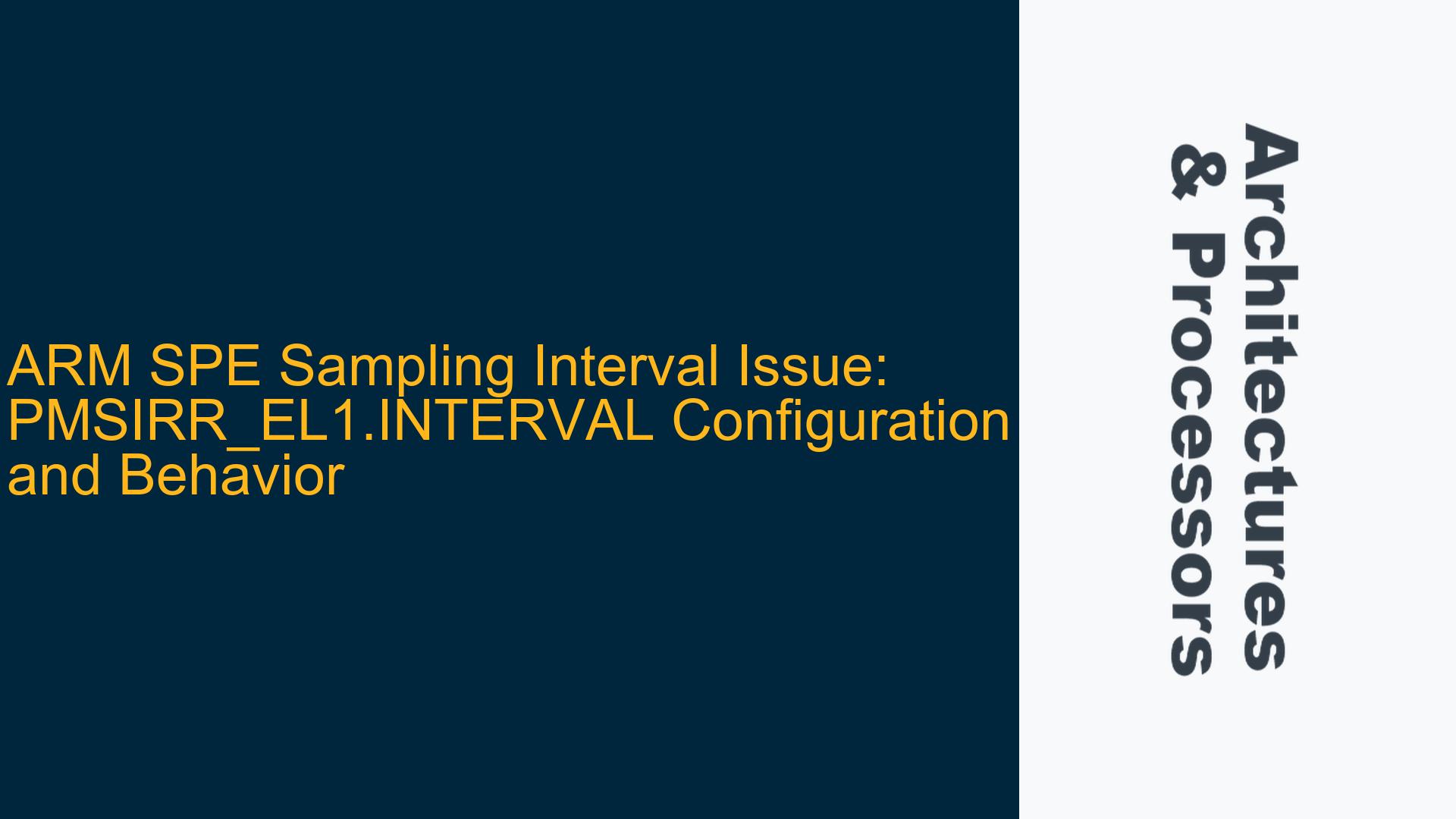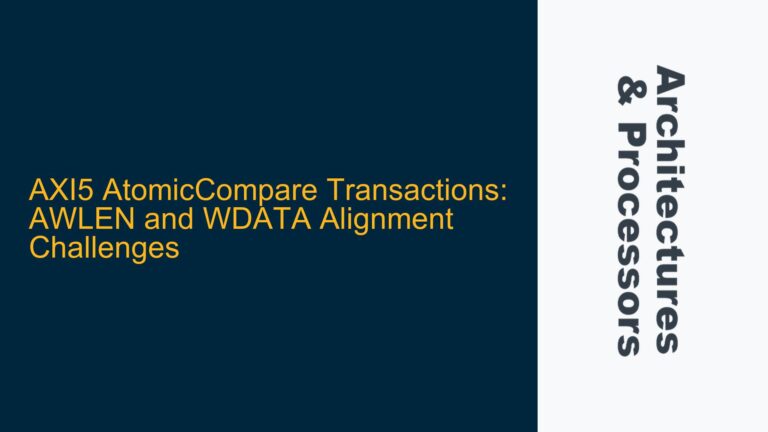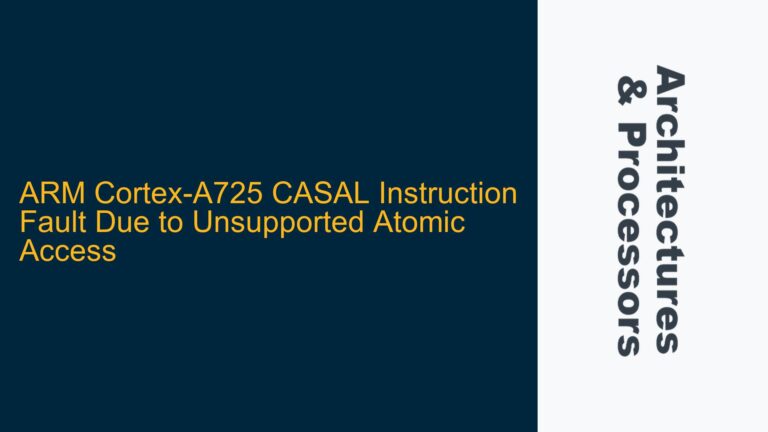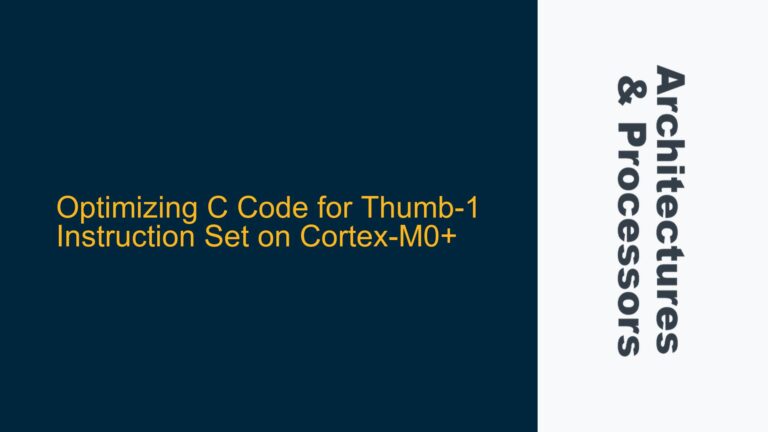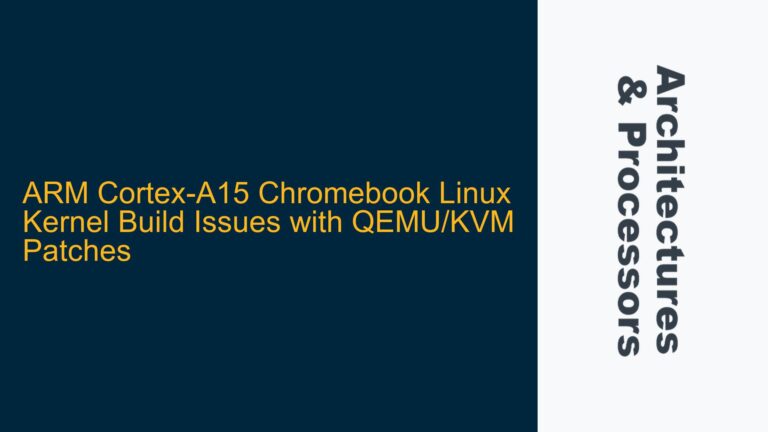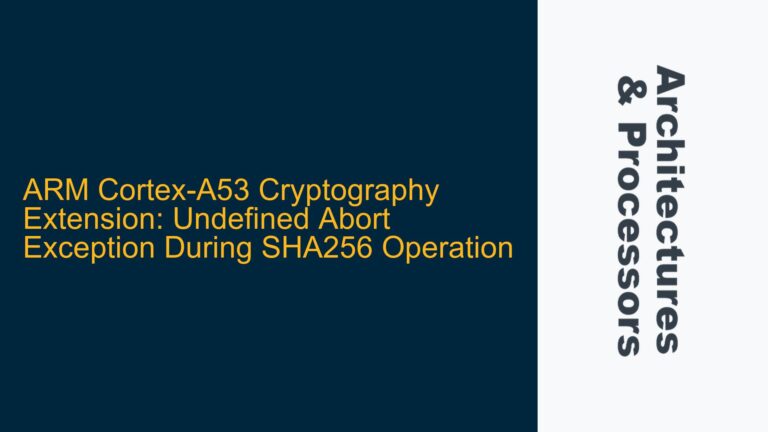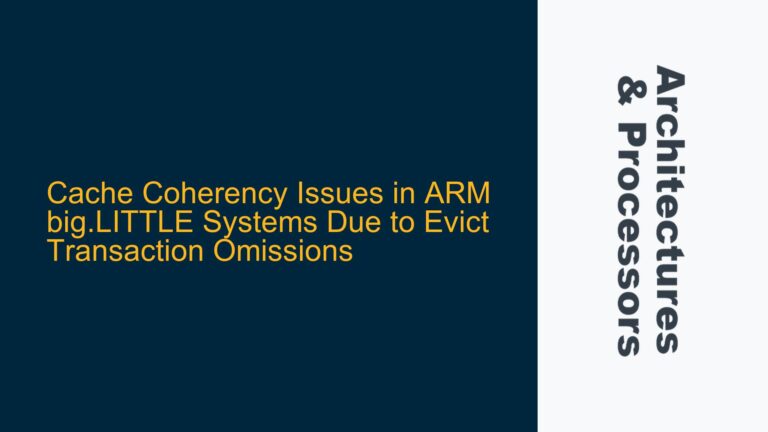ARM SPE Sampling Interval and PMSIRR_EL1.INTERVAL Configuration Challenges
The Statistical Profiling Extension (SPE) in ARM architectures is a powerful tool for performance analysis, enabling developers to trace program execution flow and gather insights into branch behavior, memory access patterns, and other critical metrics. However, a common issue arises when attempting to configure the sampling interval for SPE, particularly when setting the PMSIRR_EL1.INTERVAL register to zero. This configuration is often misunderstood, leading to unexpected behavior and incomplete profiling data.
The core of the problem lies in the interaction between the PMSIRR_EL1.INTERVAL register and the PMSICR_EL1.COUNT counter. According to the ARMv8 architecture manual, the PMSIRR_EL1.INTERVAL register controls the reload value for the PMSICR_EL1.COUNT counter, which determines the sampling interval for SPE. When the counter decrements to zero, a profiling record is generated, and the counter is reset based on the value in PMSIRR_EL1.INTERVAL. However, the manual specifies that PMSIRR_EL1.INTERVAL must be set to a non-zero value, as setting it to zero results in an undefined sampling interval. This behavior is not explicitly documented, leading to confusion and incorrect configurations.
The issue is further complicated by the fact that the minimum recommended sampling interval, as indicated by the PMSIDR_EL1.Interval field, is 256. This means that even if PMSIRR_EL1.INTERVAL is set to a non-zero value, the effective sampling interval cannot be smaller than 256 operations. Attempting to set PMSIRR_EL1.INTERVAL to zero in an effort to achieve a smaller sampling interval results in undefined behavior, as the architecture does not guarantee how the counter will behave in this case. This can lead to incomplete or inconsistent profiling data, making it difficult to accurately analyze program execution.
Undefined Behavior of PMSIRR_EL1.INTERVAL When Set to Zero
The root cause of the issue lies in the architectural definition of the PMSIRR_EL1.INTERVAL register. According to the ARMv8 architecture manual, PMSIRR_EL1.INTERVAL must be set to a non-zero value. When set to zero, the sampling interval becomes undefined, and the behavior of the PMSICR_EL1.COUNT counter is unpredictable. This is a critical detail that is often overlooked, as developers may assume that setting PMSIRR_EL1.INTERVAL to zero will result in a continuous sampling mode, capturing every branch instruction.
The manual explicitly states that software must set PMSIRR_EL1.INTERVAL to a non-zero value and that the value should be greater than the minimum indicated by PMSIDR_EL1.Interval. This minimum value is 256, meaning that the smallest possible sampling interval is 256 operations. Attempting to set PMSIRR_EL1.INTERVAL to zero not only violates the architectural requirements but also leads to undefined behavior, as the counter may not reset correctly or may reset to an unpredictable value.
This undefined behavior can manifest in several ways. For example, the counter may not reset at all, leading to no profiling records being generated. Alternatively, the counter may reset to an arbitrary value, resulting in irregular sampling intervals and incomplete profiling data. In some cases, the counter may reset to a value smaller than 256, but this behavior is not guaranteed and should not be relied upon. The lack of documentation on the exact behavior when PMSIRR_EL1.INTERVAL is set to zero further complicates the issue, as developers have no way of predicting how the system will behave in this configuration.
Correct Configuration of PMSIRR_EL1.INTERVAL and Alternative Approaches for Fine-Grained Profiling
To avoid the undefined behavior associated with setting PMSIRR_EL1.INTERVAL to zero, developers must adhere to the architectural requirements and set the register to a non-zero value. The recommended approach is to set PMSIRR_EL1.INTERVAL to a value greater than or equal to the minimum indicated by PMSIDR_EL1.Interval, which is 256. This ensures that the sampling interval is well-defined and that the profiling data is consistent and reliable.
However, this approach may not be suitable for all use cases, particularly those requiring fine-grained profiling with smaller sampling intervals. In such cases, alternative approaches must be considered. One possible solution is to use a combination of SPE and other profiling tools, such as hardware performance counters or software-based instrumentation, to achieve the desired level of detail. Hardware performance counters can be configured to monitor specific events, such as branch instructions or cache misses, and can be used in conjunction with SPE to provide a more comprehensive view of program execution.
Another approach is to use software-based instrumentation to supplement the data collected by SPE. This can be achieved by inserting profiling hooks into the code at key points, such as function entry and exit points or before and after critical sections. These hooks can be used to record additional information, such as timestamps or register values, which can then be correlated with the data collected by SPE to provide a more detailed picture of program execution.
In cases where fine-grained profiling is absolutely necessary, developers may need to consider using a different architecture or processor that supports smaller sampling intervals. For example, some ARM processors may offer additional profiling features or configurable sampling intervals that are not available in the standard ARMv8 architecture. Alternatively, developers may need to consider using a different profiling tool altogether, such as Intel PT, which offers more flexible sampling options.
In conclusion, the issue of configuring the sampling interval for ARM SPE is a complex one, with significant implications for performance analysis and debugging. By understanding the architectural requirements and limitations of PMSIRR_EL1.INTERVAL, developers can avoid undefined behavior and ensure that their profiling data is accurate and reliable. For use cases requiring finer-grained profiling, alternative approaches must be considered, including the use of additional profiling tools or software-based instrumentation. Ultimately, the key to successful profiling lies in a thorough understanding of the underlying architecture and the careful configuration of the available tools and features.
